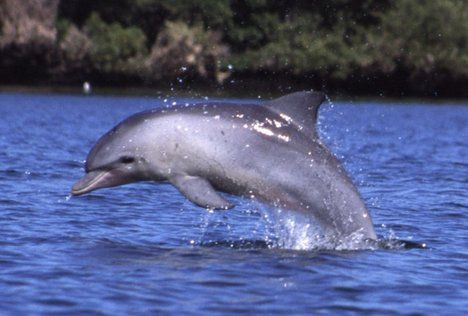Ecological Enigma in the Indian River Lagoon: Dolphins and Manatees Die in Record Numbers

The Indian River Lagoon is not only one of the most diverse ecosystems on the planet - it has also developed into a complex and confounding ecological predicament. In the past few years, the lagoon has experienced drastic changes in water quality and algal blooms, leading to alarmingly high numbers of marine animal deaths.
Containing the Mosquito Lagoon, Banana River, and Indian River, the lagoon stretches 156 miles across Florida's east coast.
In spring 2011 an algal "superbloom" occurred in the Banana River, spreading all the way into the Mosquito Lagoon, and became a major turning point for the lagoon's water quality. A drought and a cold wave in winter 2010 led up to the superbloom, wreaking havoc on the macroalgae living near the water's surface. The drought increased the lagoon's salinity; the cold wave killed the seaweed, causing high amounts of their nutrients to seep into the already contaminated water.
In an interview with Wired, Troy Rice of the St. Johns River Water Management District said that 60% of the lagoon's seagrasses perished. "We've used seagrasses since the 1980s to assess the lagoon's environmental condition," Rice told Wired. "They're considered the primary indicator of the lagoon's health."
111 manatees, out of the estimated 5,000 total manatees living in Florida, have been killed since last summer. They are found with food still in their mouths (macroalgae, not their usual sea grass fodder), and with no apparent cause for death, disease, or infection, though with some inflammation in their stomachs. Scientists are struggling to find toxins in the water, though there may be unknown toxins they have yet to discover.
The normal number of dolphin mortalities per year is around 17. 51 dolphin carcasses have been found as of July, out of the 700 total dolphins live in the lagoon. Strangely enough, unlike the manatees, the dolphins and pelicans are found emaciated.
The National Oceanic and Atmospheric Administration (NOAA) has declared an Unusual Mortality Event, and the notion of gentle sea creatures perishing in droves has caused somewhat of an environmental outcry towards state policymakers after Florida governor Rick Scott vetoed a $2 million grant for further studies of the lagoon.
While the cause of the catastrophe remains a mystery, scientists at the University of Florida are testing manatee immune systems exposed to toxins, in the hopes of investigating the reason behind the overwhelming marine deaths.



























